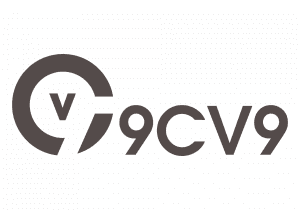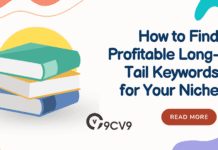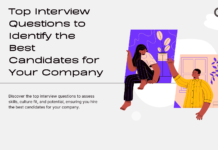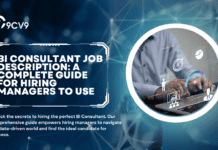Key Takeaways
- Discover the most advanced compliance software in 2025 tailored for risk mitigation, regulatory alignment, and audit readiness.
- Learn how leading GRC platforms like Vanta, ServiceNow, and OneTrust enhance operational efficiency and automate compliance workflows.
- Compare pricing, user ratings, and key features to select the ideal regulatory compliance solution for your business in 2025.
In today’s fast-evolving digital and regulatory landscape, businesses across every industry are under immense pressure to meet ever-changing compliance standards. With the increasing complexity of local and global regulations—ranging from data privacy laws like GDPR and CCPA to industry-specific mandates like HIPAA, SOX, PCI-DSS, and ISO standards—staying compliant has become more than just a legal requirement; it’s a core component of a company’s operational integrity and risk management strategy. In 2025, as regulatory frameworks grow more sophisticated and enforcement becomes more stringent, the need for advanced compliance regulatory software has never been greater.

Compliance management is no longer a siloed function within enterprises—it is deeply integrated with IT operations, cybersecurity, corporate governance, and legal departments. Organizations are expected to not only comply but to demonstrate proactive compliance through audits, reporting, and continuous monitoring. This is particularly critical for sectors such as finance, healthcare, manufacturing, pharmaceuticals, and tech, where non-compliance can lead to severe financial penalties, reputational damage, and even criminal liability. As such, the role of compliance regulatory software has transitioned from a helpful tool to an indispensable part of enterprise governance, risk, and compliance (GRC) infrastructure.
The year 2025 marks a significant shift in how organizations approach compliance management. Businesses are increasingly turning to intelligent compliance software powered by AI, machine learning, automation, and real-time analytics to streamline processes, reduce manual effort, and mitigate risks. These solutions not only automate routine compliance tasks like document management, policy enforcement, and risk assessments but also offer predictive insights that help companies stay ahead of regulatory changes. With integrated dashboards, customizable reporting, and audit trails, today’s top compliance software ensures transparency, accountability, and operational resilience across the board.
Moreover, the global push toward ESG (Environmental, Social, and Governance) standards, sustainability reporting, and data sovereignty regulations has added further layers of complexity to compliance obligations. Regulatory environments are no longer confined to one jurisdiction—they now operate across borders, necessitating scalable, multi-jurisdictional compliance platforms. As remote workforces and digital transformation accelerate, ensuring secure, compliant operations across hybrid and cloud-based environments is critical. This has given rise to a new generation of compliance software that is cloud-native, scalable, and designed to integrate seamlessly with other enterprise systems such as ERP, CRM, cybersecurity tools, and HR platforms.
In this comprehensive guide, we have meticulously researched and compiled a list of the Top 10 Best Compliance Regulatory Software in 2025. Our selection is based on key factors such as usability, scalability, regulatory coverage, automation capabilities, integration flexibility, and customer satisfaction. Whether you’re a compliance officer, IT leader, risk manager, or business executive, this list will help you identify the best-fit compliance solution to ensure your organization remains secure, audit-ready, and regulation-compliant in an increasingly complex world.
Explore the top platforms leading the way in compliance innovation, and discover how the right software can empower your organization to not only meet regulatory requirements but exceed them—turning compliance into a strategic advantage in 2025 and beyond.
Before we venture further into this article, we would like to share who we are and what we do.
About 9cv9
9cv9 is a business tech startup based in Singapore and Asia, with a strong presence all over the world.
With over nine years of startup and business experience, and being highly involved in connecting with thousands of companies and startups, the 9cv9 team has listed some important learning points in this overview of the Top 10 Best Compliance Regulatory Software in 2025.
If your company needs recruitment and headhunting services to hire top-quality employees, you can use 9cv9 headhunting and recruitment services to hire top talents and candidates. Find out more here, or send over an email to [email protected].
Or just post 1 free job posting here at 9cv9 Hiring Portal in under 10 minutes.
Top 10 Best Compliance Regulatory Software in 2025
- AuditBoard
- LogicGate Risk Cloud
- ServiceNow GRC
- OneTrust
- Hyperproof
- Diligent One Platform
- SAP GRC Solutions
- Archer Regulatory and Corporate Compliance Management
- MetricStream
- Vanta
1. AuditBoard

AuditBoard has emerged as one of the foremost governance, risk, and compliance (GRC) software solutions in 2025, offering a robust, cloud-based suite tailored for audit, risk, ESG (Environmental, Social, and Governance), and information security management. Designed to streamline complex compliance operations at scale, the platform is now a preferred choice for enterprise-grade organizations seeking operational transparency, regulatory adherence, and digital transformation within their compliance ecosystems.
Recognition and Market Presence
- Industry Ranking: Ranked #3 on G2’s 2025 list of Top 50 GRC Software Products.
- User Ratings:
- Overall: 4.6/5 (26 verified user reviews)
- InfoSec & Risk: 4.7/5 (61 reviews)
- Internal Controls: 4.7/5 (12 reviews)
- Client Reach:
- Serves over 1,800 enterprise clients worldwide.
- Used by 40% of Fortune 500 companies.
- Market Share: Estimated to control approximately 10% of the global GRC software market.
- Pricing Range:
- Annual cost: $20,000 to $81,994
- Median spend per customer: $42,775 per year
Core Functional Capabilities
AuditBoard delivers value through a comprehensive suite of tools aimed at eliminating redundancy, reducing compliance risks, and driving automation:
- SOX Compliance Management:
- Streamlines Sarbanes-Oxley compliance processes.
- Centralizes control documentation, testing, and certification workflows.
- Audit Lifecycle Automation:
- Provides real-time audit planning, fieldwork tracking, and issue remediation.
- Enterprise Risk Management (ERM):
- Facilitates dynamic risk assessments.
- Offers integrated risk registers and risk scoring.
- ESG & Sustainability Reporting:
- Enables organizations to map ESG metrics and generate investor-grade reports.
- Information Security Governance:
- Supports alignment with ISO 27001, NIST, and SOC frameworks.
Key Benefits and Business Value
AuditBoard has established itself not only through technical sophistication but also by delivering measurable business impact:
- Unlimited User Licensing:
- Removes per-user fee constraints.
- Encourages company-wide adoption.
- Integration Ecosystem:
- Natively integrates with tools like JIRA, Slack, and ServiceNow.
- Supports automated workflows and collaboration across departments.
- Customization and Scalability:
- Adaptable to complex compliance structures, particularly in public tech and financial firms.
- Offers modular functionality to align with unique compliance architectures.
Customer Feedback and Adoption Trends
Users consistently praise AuditBoard for its intuitive design, implementation support, and post-sale customer success services.
Top Praises:
- User-friendly interface with minimal training required.
- Strong controls for regulatory documentation, versioning, and traceability.
- Seamless cross-functional integration, reducing communication friction.
- Highly responsive support during onboarding phases.
Areas for Improvement:
- Some clients cite a moderate learning curve during early adoption.
- Desire for more responsive support channels during post-implementation stages.
Return on Investment (ROI) and Efficiency Metrics
AuditBoard has been particularly well-received for its quantifiable return on investment and efficiency enhancements in enterprise compliance programs.
| Metric | Value |
|---|---|
| 3-Year ROI | 281% |
| Annual Savings (per org) | $1,000,000 |
| Annual Savings per 100 Users | $103,000 |
| Time Saved on Audit Tasks | 30–45% |
| Reduction in Manual Compliance Ops | Up to 50% |
Efficiency Drivers:
- Automation of repetitive audit tasks.
- Centralized dashboards reducing time spent on data aggregation.
- Template-based controls and policies for faster rollout across departments.
Strategic Fit for Enterprises in 2025
AuditBoard is best suited for:
- Large enterprises and public companies managing SOX, ESG, and cybersecurity compliance.
- Heavily regulated industries such as finance, healthcare, and technology.
- Organizations seeking to unify their GRC stack under a single, scalable platform.
SEO Keywords Targeted:
- Compliance regulatory software 2025
- Top GRC software platforms
- SOX and ESG audit automation
- Cloud-based compliance tools
- Best compliance management software for enterprises
Conclusion
As regulatory complexity intensifies in 2025, AuditBoard continues to demonstrate industry leadership by combining strategic compliance automation with enterprise-grade scalability. With proven ROI, a wide customer base, and a forward-looking product roadmap, AuditBoard remains a top contender for any organization seeking a reliable and intelligent compliance regulatory solution.
2. LogicGate Risk Cloud

In 2025, LogicGate Risk Cloud stands as a dynamic and highly adaptable compliance and risk management platform, engineered for organizations that demand flexibility in managing their governance, risk, and compliance (GRC) processes. Distinguished by its no-code architecture, LogicGate empowers users to design, deploy, and refine compliance workflows without traditional coding requirements. This agility makes it particularly suitable for organizations with evolving regulatory needs and unique risk profiles.
As enterprises continue to face increasingly complex regulatory demands across global markets, LogicGate’s Risk Cloud offers a scalable, user-centric approach to compliance management—bridging risk mitigation strategies with customizable automation tools.
Market Standing and Recognition
Despite not being the largest player in the GRC software space, LogicGate has established a growing footprint and earned significant accolades within the industry.
- User Ratings:
- G2 Crowd: 4.6/5 (based on 26 verified user reviews)
- Gartner Peer Insights (IT Risk Management): 3.8/5 (from 8 reviews)
- Business Recognition:
- Placed in the top 11% of the Inc. 5000 list in 2021, underscoring rapid and consistent business growth.
- Strategic Partnerships:
- LogicGate has expanded its customer access through a strategic partnership with Optiv, a cybersecurity solutions integrator serving over 7,000 enterprise clients.
- Client Base (2025):
- Serves hundreds of mid-sized to enterprise clients globally.
- Pricing Range:
- Annual subscription pricing ranges from $13,765 to $130,041.
- Median annual customer spend: $52,567.
Core Capabilities and Functional Strengths
LogicGate Risk Cloud’s value lies in its modularity and design flexibility, positioning it as an ideal solution for organizations that require tailored compliance environments.
Key Features:
- No-Code Workflow Builder:
- Enables users to create and modify compliance workflows without engineering support.
- Visual drag-and-drop interface for intuitive workflow design.
- Risk Management Dashboard:
- Real-time visibility into enterprise risk metrics.
- Configurable risk appetite thresholds and alerts.
- Automated Alerts & Notifications:
- Proactive compliance enforcement through automated email triggers and deadline tracking.
- Seamless Integration:
- Connects with widely used tools including Slack, Jira, Microsoft Teams, and ServiceNow.
- Supports data synchronization and multi-platform collaboration.
Notable Modules:
| GRC Module | Functionality |
|---|---|
| IT Risk Management | Assesses cybersecurity threats and third-party exposures |
| Compliance Management | Tracks obligations across regulatory frameworks |
| Incident Response | Captures and resolves compliance violations or breaches |
| Policy & Document Control | Manages version-controlled regulatory documents |
| Vendor Risk Management | Monitors third-party compliance and SLA adherence |
Customer Experience and Sentiment
Users report a generally positive experience with LogicGate Risk Cloud, citing its flexibility, user autonomy, and streamlined implementation process.
Strengths Reported by Users:
- High configurability tailored to internal governance models.
- Efficient onboarding experience with pre-built templates.
- Rapid deployment for small to mid-size compliance teams.
- Ideal for cross-departmental collaboration and visibility.
Areas for Improvement:
- Audit Evidence Collection: Some users report the absence of automated document collection for audit readiness.
- Support Consistency: Occasional feedback on inconsistent customer service quality after initial setup.
Financial Value and ROI Optimization
Recognizing the growing demand for value-driven compliance, LogicGate has introduced a strategic toolset designed to help organizations quantify the financial benefits of their GRC programs.
GRC Program Value Realization Tool:
- Tracks cost savings, risk reduction impact, and productivity gains.
- Helps GRC teams demonstrate ROI to executive leadership.
- Provides dashboards for visualizing financial performance across compliance initiatives.
| Financial Impact Metrics | Details |
|---|---|
| Annual GRC Cost Reduction | Varies by program size and automation |
| Compliance Efficiency Gain | ~30% faster resolution of audit items |
| Time Saved via Automation | Up to 40% on repetitive compliance tasks |
| Tool ROI Cycle | ~18 to 24 months |
Ideal Use Cases and Buyer Profile
LogicGate Risk Cloud is uniquely positioned for organizations seeking high configurability, modular expansion, and enterprise-grade integration without the cost and rigidity of legacy GRC platforms.
Best Suited For:
- Mid-market and enterprise organizations with tailored compliance demands.
- Firms operating across multiple regulatory frameworks, such as financial services, healthcare, and fintech.
- Organizations seeking to internalize GRC customization rather than relying on IT-heavy deployment models.
SEO Keywords Optimized:
- Customizable compliance software 2025
- No-code GRC platform
- Best enterprise risk management tools
- Risk Cloud platform review
- Top audit management software for 2025
Conclusion
As compliance and risk landscapes continue to evolve rapidly in 2025, LogicGate Risk Cloud stands out for its adaptability, ease of use, and quantifiable value delivery. With its no-code infrastructure and a growing reputation for operational flexibility, the platform serves as a powerful enabler for modern organizations seeking a scalable and measurable GRC solution.
3. ServiceNow GRC

ServiceNow Governance, Risk, and Compliance (GRC) represents a mature, enterprise-class solution designed to unify risk management, regulatory compliance, and IT operations into a seamless and scalable architecture. Originally developed as an IT Service Management (ITSM) platform, ServiceNow has rapidly evolved to become a comprehensive GRC solution with a highly integrated ecosystem, making it one of the most trusted platforms for large enterprises in 2025.
By embedding GRC processes into everyday IT and business workflows, ServiceNow empowers organizations to transform compliance from a reactive function into a strategic business enabler. Its platform supports robust automation, intelligent incident response, and end-to-end risk lifecycle management—underpinned by real-time analytics and AI-driven decision-making tools.
Market Recognition and Industry Presence
ServiceNow GRC continues to be a dominant force in the enterprise software landscape, especially among large-scale, globally distributed organizations.
Reputation and Ratings:
- Gartner Peer Insights Rating (Integrated Risk Management):
- 4.5/5 stars based on 70 verified reviews.
- G2 Platform Rating:
- 4.4/5 stars, based on feedback from 2,100+ verified users.
- Awards & Industry Recognition:
- Winner of the 2025 Emotional Footprint Award, indicating strong user satisfaction and emotional connection.
Client Base & Market Share:
- Utilized by approximately 85% of Fortune 500 companies.
- Thousands of enterprises globally leverage ServiceNow’s Now Platform for integrated IT, security, and risk management functions.
- GRC clients span sectors such as financial services, healthcare, manufacturing, and government.
Pricing Overview:
| Cost Element | Details |
|---|---|
| Entry-Level Pricing | Starting from $45,255/year |
| Enterprise-Level Pricing | Up to $538,631/year |
| Median Buyer Spend (2025) | $130,080/year |
| Pricing Model | Tiered by modules, users, and data volume |
Key Features and Functional Capabilities
ServiceNow GRC stands out for its deep platform integration, advanced automation tools, and no-code workflow customization. It is designed to handle the complexities of compliance programs across global regulatory frameworks such as SOX, GDPR, HIPAA, and ISO 27001.
Core Capabilities:
- Unified GRC Architecture:
- Consolidates risk, compliance, and IT operations under a single platform.
- Eliminates data silos by providing a centralized source of compliance truth.
- No-Code Playbook Builder:
- Allows non-technical users to develop and adapt complex workflows using drag-and-drop functionality.
- Ideal for organizations with dynamic and evolving compliance needs.
- Real-Time Risk Monitoring:
- Continuous control monitoring and automated evidence collection.
- Dashboards provide instant visibility into compliance status, risk exposure, and mitigation actions.
- AI-Powered Assistance:
- Includes an intelligent virtual agent chatbot to guide users, answer compliance queries, and streamline ticket resolution.
- Automation and Integration:
- Integrates natively with other ServiceNow modules such as ITSM, SecOps, HRSD, and Customer Service.
- Automates risk scoring, policy exceptions, and task assignments for increased efficiency.
Functional Modules:
| GRC Component | Purpose |
|---|---|
| Policy and Compliance Mgmt | Create, publish, and track compliance frameworks |
| Risk Management | Identify, assess, and mitigate enterprise risks |
| Audit Management | Streamline internal and external audit processes |
| Vendor Risk Management | Evaluate and monitor third-party compliance and risk |
| Business Continuity Planning | Ensure organizational resilience and recovery capability |
Customer Feedback and Operational Impact
Enterprise users highlight ServiceNow GRC’s enterprise-grade scalability, modular flexibility, and comprehensive automation capabilities. The platform is consistently praised for its ability to drive operational efficiency and strategic insight.
Advantages Reported by Clients:
- Holistic visibility across risk and compliance landscapes.
- Seamless connection between GRC and IT workflows (e.g., incident management, change control).
- Accelerated compliance cycle times through automation.
- Role-based access and collaboration across departments.
Challenges Noted by Users:
- High Entry Cost: The platform’s advanced capabilities come with a significant investment, making it best suited for medium-to-large enterprises.
- Learning Curve: Requires onboarding time due to platform depth and configuration options.
Performance and Return on Investment
ServiceNow GRC contributes substantial cost savings, process efficiency, and audit readiness improvements. For large organizations, the ROI is driven by automation, reduced compliance labor hours, and faster incident resolution.
Operational ROI Metrics:
| Metric | Estimated Value (2025) |
|---|---|
| Reduction in Compliance Costs | 25–40% annually |
| Time Saved on Audit Preparation | 30–50% |
| Reduction in Manual Task Effort | 60–70% through automation |
| Risk Incident Response Time | Improved by up to 55% |
| Payback Period | Typically within 18–24 months |
Ideal Use Cases and Target Buyer Profile
ServiceNow GRC is most advantageous for global enterprises and highly regulated industries that require a platform capable of handling intricate compliance frameworks at scale.
Best Suited For:
- Fortune 1000 companies seeking integrated GRC and ITSM solutions.
- Highly regulated sectors: Finance, Insurance, Pharmaceuticals, Energy.
- Organizations needing cross-functional compliance orchestration across risk, IT, and audit teams.
- Businesses with complex third-party ecosystems and global compliance obligations.
Relevant SEO Keywords:
- Best enterprise GRC software 2025
- ServiceNow GRC platform features
- Risk and compliance automation tools
- Integrated risk management software
- Top GRC tools for large businesses
Conclusion
In 2025, ServiceNow GRC stands as a benchmark for enterprise-scale compliance and risk management systems. Its ability to integrate seamlessly with IT workflows, automate risk intelligence, and centralize policy enforcement positions it as a vital asset for organizations striving to turn compliance into a competitive advantage. While its cost and complexity may deter smaller businesses, for large-scale enterprises, the platform offers unmatched value, visibility, and long-term performance.
4. OneTrust

As regulatory environments grow increasingly complex in 2025, OneTrust continues to distinguish itself as a dominant force in the domain of privacy management, data governance, and regulatory compliance software. The platform delivers an all-in-one suite that empowers organizations to automate privacy workflows, ensure compliance with global frameworks like GDPR, CCPA, LGPD, and HIPAA, and gain full visibility into the lifecycle of personal and sensitive data.
With an expansive and modular architecture, OneTrust’s product portfolio spans privacy management, vendor risk oversight, cookie and consent handling, and regulatory monitoring. Its robust compliance automation tools are widely adopted by organizations seeking to streamline operations, reduce regulatory exposure, and proactively manage data-related risks.
Market Leadership and Industry Adoption
Platform Ratings and Industry Validation
OneTrust’s position as a category leader is reinforced by consistently strong ratings and broad industry recognition:
- CookieYes (OneTrust’s Cookie Consent Tool):
- G2 Rating: 4.4/5
- Capterra Rating: 4.7/5
- Privacy Automation Solutions (OneTrust Privacy):
- Gartner Peer Insights: 4.3/5 (based on 43 reviews)
- G2 User Rating: 4.3/5 (from 148 verified reviews)
- Market Share in Privacy Management Software:
- 19.9% global market share (as of May 2025), placing OneTrust as the top vendor in the category.
Customer Base and Market Penetration
- Trusted by 14,000+ organizations worldwide
- Active in over 100 countries, including across regulated sectors such as finance, healthcare, eCommerce, and government.
- Notable customers include Fortune 500 companies and mid-market enterprises that prioritize data ethics and privacy-first operations.
Pricing Structure and Editions
OneTrust is designed to accommodate a wide range of organizational sizes and needs through flexible pricing models and product editions.
| Pricing Tier | Annual Cost (USD) | Features |
|---|---|---|
| Essentials Edition | Starting at $500/year | Core privacy tools for small businesses |
| Professional Plan | Ranges from $1,620 to $42,533 | Mid-market support with vendor and consent tools |
| Enterprise Edition | Custom Pricing | Scalable features, integrations, and SLA support |
| Median Buyer Cost (2025) | $11,461/year | Based on current user purchasing trends |
Core Functionalities and Technical Strengths
OneTrust delivers extensive capabilities across a wide spectrum of governance, risk, and compliance activities. It is especially known for its privacy-centric architecture and AI-powered automation that allows businesses to stay compliant across multiple regulatory jurisdictions.
Key Modules and Capabilities:
- Privacy Management & Automation:
- Data subject request (DSR) handling
- Automated data mapping and classification
- Privacy impact assessments (PIAs) and data protection impact assessments (DPIAs)
- Consent and Cookie Management:
- Customizable banners and preference centers
- Geo-location based consent rules
- Integration with web CMS platforms and mobile SDKs
- Third-Party Risk & Vendor Management:
- Centralized vendor repository with risk scoring
- Streamlined third-party assessments and approvals
- Continuous monitoring and reassessment workflows
- Regulatory Intelligence:
- Real-time updates on evolving global privacy regulations
- Embedded guidance for local and international data laws
- Pre-built templates for faster compliance rollouts
Performance Metrics and ROI Analysis
Independent studies and client feedback have underscored OneTrust’s ability to significantly enhance privacy operations and deliver measurable financial returns.
Key Business Outcomes Reported by Clients:
| Metric | Impact |
|---|---|
| Three-Year ROI | 227% |
| Improvement in Privacy Team Productivity | 75% increase |
| Annual Operational Cost Savings | $195,000 per organization (on average) |
| Reduction in Manual Compliance Tasks | Up to 60% through automation |
| Time to Compliance | Reduced by 40–50% across frameworks |
These results position OneTrust as a highly effective compliance software investment for data-driven organizations navigating the challenges of modern regulatory landscapes.
Customer Sentiment and Platform Experience
User sentiment remains broadly positive, especially in the areas of usability, configuration options, and real-time compliance tracking.
Strengths Highlighted in Reviews:
- Easy deployment and intuitive user interface
- Comprehensive regulatory coverage (GDPR, CPRA, ISO, SOC 2)
- Frequent product updates reflecting new laws and standards
- Versatile integration options across cloud, on-premise, and hybrid systems
Reported Limitations:
- Some users cite integration complexity with legacy systems
- Enterprise pricing may be cost-prohibitive for smaller firms
- Occasional performance lags when handling large data volumes
Ideal Use Cases and Buyer Profile
OneTrust’s flexibility and modularity make it suitable for a wide spectrum of compliance needs, though it is particularly advantageous for privacy-first organizations operating in data-intensive industries.
Best Suited For:
- Enterprises handling sensitive personal data across multiple jurisdictions
- eCommerce and SaaS platforms seeking robust cookie compliance and user consent tools
- Financial institutions and healthcare providers bound by complex regulatory obligations
- Companies looking to build trust-driven data strategies with measurable compliance ROI
Relevant SEO Keywords:
- Best data privacy software 2025
- OneTrust GRC features and pricing
- Cookie and consent management platforms
- GDPR and CCPA compliance software
- Privacy automation tools for enterprises
- Vendor risk management platforms
Conclusion
As of 2025, OneTrust remains a benchmark in the compliance regulatory software market, particularly in the realm of data privacy, vendor risk, and consent management. Backed by a rich feature set, proven ROI, and broad industry recognition, OneTrust is a compelling choice for organizations aiming to maintain regulatory alignment while enhancing consumer trust and operational efficiency. Despite its premium pricing at the enterprise level, the platform’s automation depth and strategic value make it an indispensable asset for companies committed to privacy compliance at scale.
5. Hyperproof

As regulatory frameworks become increasingly stringent and dynamic in 2025, organizations are seeking agile and scalable solutions that not only ensure compliance but also drive operational efficiency. Hyperproof emerges as a high-performing compliance operations platform engineered to simplify complex governance workflows, reduce manual tasks, and establish a proactive approach to risk management.
With a design philosophy centered on continuous monitoring, automation, and seamless integration, Hyperproof enables companies to maintain a state of perpetual audit readiness. By aligning compliance with business operations in real-time, it transforms traditionally reactive processes into strategic assets.
Platform Ratings and Industry Recognition
Hyperproof has garnered strong endorsements from trusted peer review platforms and continues to gain traction among enterprise users.
Peer-Reviewed Ratings (as of 2025):
| Category | Platform | Rating | Number of Reviews |
|---|---|---|---|
| Corporate Compliance & Oversight | Gartner | 4.8/5 | 10 |
| Audit Management | Gartner | 4.7/5 | 32 |
| Audit Management | G2 | 4.7/5 | 32 |
- These high ratings indicate user satisfaction in critical areas such as audit automation, task management, and evidence tracking, reflecting the platform’s intuitive design and robust feature set.
Market Share and Client Base
Although Hyperproof operates in a competitive space, its rise in market share and adoption signals its growing influence:
- Estimated Market Share (2025): ~10% among leading compliance platforms
- Customer Base:
- Serves hundreds of mid-sized to large enterprises across finance, technology, healthcare, and manufacturing sectors.
- Especially popular with compliance teams managing multiple frameworks like SOC 2, ISO 27001, PCI-DSS, and HIPAA.
Pricing and Value Proposition
Hyperproof’s pricing reflects its enterprise-grade capabilities while remaining accessible to mid-market organizations.
| Plan Tier | Annual Cost (USD) | Details |
|---|---|---|
| Standard/Professional | $22,500 – $54,060 | Depends on features, storage, and user seat requirements |
| Median Buyer Cost (2025) | $39,910/year | Reflects typical usage across compliance functions |
Key Features and Technical Capabilities
Hyperproof is designed to centralize and automate key compliance workflows, reducing operational burden and ensuring audit readiness across evolving regulatory landscapes.
Core Capabilities Include:
- Automated Evidence Collection:
- Enables automated recurring evidence uploads via integrations (e.g., Google Drive, Slack, AWS, Jira).
- Automates up to 90% of the evidence collection process.
- Reduces time spent on compliance documentation by up to 80 hours per month for mid-size teams.
- Real-Time Monitoring & Dashboarding:
- Provides centralized views of control status, overdue tasks, and upcoming audit milestones.
- Offers dynamic dashboards for risk scoring, control coverage, and framework alignment.
- Task and Workflow Automation:
- Assigns tasks with built-in reminders to keep teams accountable and on track.
- Integrates with popular project management and ITSM tools for seamless collaboration.
- Multi-Framework Management:
- Supports side-by-side compliance with multiple standards—ideal for companies with diverse regulatory exposure.
- Enables control mapping across frameworks to reduce redundancy.
- Evidence Repository & Access Controls:
- Houses a secure and centralized document repository.
- Offers granular permissions for stakeholders including auditors, consultants, and internal teams.
Performance Metrics and Operational Impact
Hyperproof delivers significant quantifiable benefits, particularly in terms of efficiency, automation, and cost reduction.
Key Benefits Realized by Customers:
| Metric | Reported Outcome |
|---|---|
| Evidence Collection Automation | Up to 90% automated |
| Time Savings Per Month | Up to 80 hours per compliance team |
| Improved Audit Readiness | Reduction in manual prep cycles by 50–70% |
| Task Completion and Accountability | Enhanced via integrated reminders and tracking |
These metrics illustrate Hyperproof’s capacity to transform compliance from a reactive burden into a proactive, strategic function.
Customer Feedback and User Sentiment
User testimonials consistently reflect high satisfaction in terms of platform flexibility, usability, and support experience.
Highlighted Strengths:
- Ease of Use:
- Designed for both technical and non-technical users.
- Minimal training required for onboarding new teams.
- Integration Ecosystem:
- Out-of-the-box connectivity with Microsoft 365, Google Workspace, AWS, Salesforce, and more.
- Real-time syncing ensures data accuracy across systems.
- Customer Support:
- Personalized onboarding and responsive support teams receive frequent praise.
Reported Limitations:
- Some users note the absence of a Statement of Applicability (SoA) feature, especially for ISO 27001.
- A few reports of interface complexity when configuring workflows for multiple teams.
Ideal Use Cases and Buyer Profiles
Hyperproof is best suited for organizations that require structured compliance oversight while maintaining flexibility to scale or customize their GRC efforts.
Most Suitable For:
- Mid-sized to large organizations managing multiple compliance frameworks
- Companies seeking continuous monitoring and audit readiness
- Teams aiming to reduce time and effort spent on manual tasks
- Regulated industries such as FinTech, HealthTech, SaaS, and eCommerce
SEO-Optimized Keywords:
- Best compliance automation software 2025
- Hyperproof GRC platform review
- Audit management software for ISO 27001 and SOC 2
- Compliance workflow automation tools
- Continuous compliance monitoring systems
- Evidence collection automation tools
Conclusion
In the evolving landscape of regulatory oversight and digital risk in 2025, Hyperproof has established itself as a powerful, automation-focused compliance platform tailored for modern business needs. With high satisfaction ratings, a growing market footprint, and the ability to save significant time and effort through automation, Hyperproof is a top-tier solution for organizations looking to streamline their governance, risk, and compliance operations.
Its comprehensive suite of tools, real-time monitoring capabilities, and seamless integrations position it as an ideal choice for forward-thinking companies prioritizing agility, efficiency, and audit-readiness.
6. Diligent One Platform

In 2025, the pressure on organizations to maintain regulatory adherence, ensure enterprise transparency, and strengthen operational governance continues to intensify. Within this dynamic environment, Diligent One Platform stands out as a formidable, enterprise-grade GRC solution. It brings together an integrated portfolio of tools that unify governance, risk management, audit, compliance, and board oversight into a single cloud-native platform.
Designed to serve the needs of both public and private sector organizations, Diligent provides deep configurability, automation capabilities, and real-time visibility into organizational risks. Its utility is especially prominent among large-scale enterprises requiring robust board governance and executive collaboration.
Global Reach and Market Adoption
Diligent has solidified its reputation as one of the most widely adopted GRC platforms in the market, with an extensive international user base.
- Client Portfolio:
- Serves over 35,000 organizations globally
- Supports 1+ million users, including board directors, C-suite executives, compliance officers, and legal teams
- User Demographics:
- Predominantly used by organizations in highly regulated sectors: financial services, healthcare, energy, and government
- Widely adopted by corporate boards for digitized governance and secure collaboration
Independent Ratings and Analyst Reviews
Diligent One Platform has consistently earned high marks across multiple industry benchmarks for its performance in corporate compliance, IT risk, and integrated GRC capabilities.
Industry Ratings Snapshot (2025)
| GRC Domain | Rating Provider | Rating | Number of Reviews |
|---|---|---|---|
| Corporate Compliance & Oversight | Gartner | 4.5/5 | 9 |
| IT Risk Management | Gartner | 4.3/5 | 92 |
| IT Risk Management | G2 | 4.3/5 | 92 |
- These ratings highlight Diligent’s robust risk tracking, audit automation, and governance integration capabilities.
Pricing Structure and Investment Scalability
Diligent One Platform is designed to accommodate both mid-sized firms and global enterprises, offering a scalable pricing model based on organizational needs.
| Pricing Tier | Annual Cost Range (USD) | Description |
|---|---|---|
| Entry-Level / Essentials | From $2,500 | Ideal for small boards and basic governance use cases |
| Enterprise / Fully Integrated | Up to $420,000 | For large multinational corporations with complex GRC needs |
| Average Buyer Spend (2025) | $43,000/year | Reflects median adoption by mid-to-large enterprises |
- The wide pricing spectrum reflects the platform’s versatility across industries and use cases.
Key Features and Capabilities of the Platform
Diligent’s end-to-end GRC architecture streamlines critical compliance, governance, and oversight functions. It is especially recognized for its sophisticated board management, audit automation, and entity governance tools.
Notable Functionalities:
- Audit Management Automation:
- Schedule, execute, and document audits with embedded templates and automated workflows.
- Real-time dashboards help identify non-conformities and manage remediation plans.
- Risk and Compliance Monitoring:
- Allows continuous tracking of enterprise risks aligned with internal controls and global frameworks.
- Built-in risk heatmaps and predictive analytics support decision-making.
- Entity & Subsidiary Management:
- Manages corporate entities, directors, and compliance events through a centralized dashboard.
- Supports multi-jurisdictional reporting with automatic filing reminders.
- Board Collaboration & Governance:
- Secure portal for sharing agendas, board books, resolutions, and meeting materials.
- Enables voting, e-signatures, and real-time annotations for streamlined board communication.
- Third-Party Risk & Regulatory Intelligence:
- Tools for assessing vendor risks and integrating regulatory change feeds.
- Custom alerts for evolving compliance mandates across geographies.
Efficiency Gains and Measurable Business Impact
Organizations leveraging Diligent One Platform frequently report substantial productivity improvements and quantifiable returns on investment.
Performance Metrics Reported by Users:
| Efficiency Metric | Reported Outcome |
|---|---|
| Board Material Preparation Time | 50–60% reduction |
| Entity Governance Process Time | Up to 70% time savings |
| Return on Investment (3-Year Period) | 18% ROI |
| Board and Executive Collaboration Accuracy | Significant improvement via centralized tools |
These metrics underscore Diligent’s ability to optimize high-level governance workflows and reduce administrative overhead for compliance teams.
Customer Feedback and User Experience
Diligent has been positively received for its holistic design and extensive automation features, though it is occasionally cited as complex to configure due to its breadth of functionalities.
Praised Aspects:
- Comprehensive Integration:
- All GRC functionalities housed in a single ecosystem
- Reduces fragmentation between departments (legal, audit, risk)
- Strong Executive Collaboration Features:
- Highly secure platform for managing board communications
- Supports ESG reporting and shareholder transparency
- Reliable Technical Support:
- 24/7 assistance and in-platform help guides
- Onboarding teams receive tailored implementation support
Reported Limitations:
- Users occasionally note a steep learning curve during initial setup
- Some mention that custom configurations can be resource-intensive
Ideal Customer Profiles
Diligent is best suited for enterprise environments where governance, risk, and compliance intersect with high-level decision-making, especially in regulated sectors or companies with complex legal structures.
Best Fit For:
- Multinational corporations with multi-entity management needs
- Public companies with stringent reporting requirements
- Executive teams requiring secure collaboration tools
- Compliance teams managing large audit and risk portfolios
SEO-Optimized Keywords
- Diligent One Platform GRC review 2025
- Best audit automation software for enterprises
- Corporate compliance and board governance tools
- Entity management software for multinational firms
- Risk and compliance software with ROI metrics
- Board collaboration software for executives
Conclusion
With its deep capabilities across board governance, risk oversight, and compliance automation, Diligent One Platform has earned its place among the most influential GRC solutions in 2025. Its ability to centralize key governance functions, support time-saving automation, and improve enterprise visibility makes it a particularly compelling choice for large organizations with complex structures.
The platform’s combination of executive-level governance tools and compliance-focused automation underscores its dual role as both a strategic and operational enabler in today’s high-stakes regulatory environment.
7. SAP GRC Solutions

In the highly regulated and increasingly interconnected digital enterprise landscape of 2025, organizations face mounting pressure to align with global compliance mandates while safeguarding operational integrity. SAP GRC (Governance, Risk, and Compliance) Solutions emerges as a top-tier platform specifically engineered to address these challenges, particularly for enterprises operating within the SAP ecosystem.
SAP GRC is not merely an add-on but a deeply integrated suite within the broader SAP landscape, enabling real-time risk monitoring, policy enforcement, audit management, and regulatory compliance through unified workflows and enterprise-wide visibility.
Strategic Integration within SAP Ecosystem
For organizations that rely heavily on SAP for enterprise resource planning (ERP), supply chain operations, finance, and procurement, SAP GRC offers unparalleled synergy.
- Native SAP Integration:
- Fully interoperable with SAP S/4HANA, SAP ERP Central Component (ECC), and SAP Business Technology Platform.
- Real-time data exchange enables dynamic risk assessments and immediate compliance alerts.
- Centralized Risk and Compliance Hub:
- Consolidates all governance-related data into a single dashboard.
- Automates segregation of duties (SoD), access control, policy enforcement, and identity management.
- Regulatory Coverage:
- Built-in frameworks to support major regulatory standards: GDPR, SOX, HIPAA, ISO 27001, and global financial regulations.
Core Capabilities and Functionality Overview
SAP GRC is structured around modular components, allowing organizations to tailor their compliance programs while maintaining a scalable framework for future regulatory needs.
Key Functional Modules:
| SAP GRC Module | Primary Functionality |
|---|---|
| Access Control | Manages user access, monitors privileges, and prevents SoD conflicts |
| Process Control | Ensures operational procedures align with compliance policies |
| Risk Management | Identifies, evaluates, and prioritizes organizational risks using embedded analytics |
| Audit Management | Streamlines planning, execution, and reporting of internal audits |
| Global Trade Services (GTS) | Manages cross-border trade compliance, licensing, and customs processing |
| Fraud Management | Detects anomalies and suspicious activity across transactions |
- Each module can operate independently or be integrated to form a unified compliance strategy.
Independent Ratings and Analyst Recognition
In 2025, SAP GRC continues to maintain a strong reputation among compliance professionals and enterprise decision-makers.
Platform Ratings Overview
| Source | Domain | Rating | Reviews Count |
|---|---|---|---|
| Gartner | GRC Solutions | 4.3/5 | 37 |
| G2 Crowd | GRC Software | 4.3/5 | 37 |
- These consistent ratings indicate a mature, stable, and reliable platform capable of meeting enterprise compliance requirements.
- Additionally, SAP GRC Solutions received the Emotional Footprint Award (2025), further emphasizing user satisfaction and vendor trust.
Cost Considerations and Licensing Model
SAP GRC follows a modular pricing structure, making it flexible for enterprises of varying scales and industries.
| SAP GRC Pricing Overview | Details |
|---|---|
| Licensing Model | Subscription-based or perpetual licensing via SAP enterprise agreements |
| Pricing Variability | Depends on number of modules deployed, user counts, and infrastructure size |
| Estimated Annual Cost Range | Typically ranges from $35,000 to $400,000+ per year for mid-large firms |
| Customization & Implementation Cost | Varies significantly depending on enterprise integration complexity |
- Organizations already invested in SAP infrastructure benefit from reduced overhead and faster deployment timelines.
Performance Advantages and Operational Value
SAP GRC offers extensive process automation and compliance assurance features that significantly reduce the manual burden on internal audit, security, and legal teams.
Reported Benefits:
- Operational Efficiency:
- Automates up to 70% of internal controls testing.
- Reduces audit cycle times through digitized workflows and pre-configured compliance templates.
- Risk Transparency:
- Advanced dashboards provide real-time monitoring of key risk indicators (KRIs).
- Integration with SAP analytics enables predictive risk modeling and impact analysis.
- Scalability & Adaptability:
- Accommodates multinational enterprises with operations spanning multiple regulatory jurisdictions.
- Designed to evolve with dynamic compliance frameworks through periodic updates.
Customer Sentiment and Usability Feedback
Feedback from users and compliance professionals underscores SAP GRC’s strengths and areas for improvement.
Positives:
- Trusted Enterprise-Grade Infrastructure:
- Considered a strategic solution for Fortune 500 companies and multinational organizations.
- Enables seamless compliance management across departments, subsidiaries, and regions.
- Customization and Configurability:
- Offers rule-based policy enforcement, configurable alerts, and flexible reporting capabilities.
- Security-First Design:
- Built on SAP’s secure architecture, ensuring data confidentiality and regulatory data handling compliance.
Reported Challenges:
- Complex Initial Configuration:
- Due to its enterprise-grade nature, implementation can require significant planning and IT support.
- High Total Cost of Ownership (TCO):
- While cost-effective for SAP-centric organizations, the platform may be less economical for firms not already within the SAP ecosystem.
Ideal Use Cases and Target Organizations
SAP GRC is particularly beneficial for organizations that operate in regulated environments, manage complex supply chains, or require advanced internal controls and access governance.
Recommended For:
- Large enterprises with SAP ERP deployments
- Financial institutions with stringent SoD requirements
- Manufacturers and logistics providers navigating global trade regulations
- Health and life sciences companies requiring strict HIPAA and GDPR adherence
SEO-Optimized Keywords
- SAP GRC review 2025
- Best compliance software for SAP users
- Integrated risk management solutions 2025
- Governance and audit management software
- SAP GRC Access Control and Process Control
- Corporate compliance automation platform
Conclusion
SAP GRC Solutions remains a dominant force in the compliance software landscape for 2025, particularly for organizations already embedded within the SAP technology stack. Its integrated, modular design, high configurability, and robust audit capabilities make it an essential tool for enterprises prioritizing end-to-end compliance, risk visibility, and internal governance.
While it demands a significant investment in both time and resources for implementation, the long-term benefits of streamlined processes, reduced compliance risks, and unified governance workflows make SAP GRC a strategic asset for large-scale businesses committed to regulatory excellence.
8. Archer Regulatory and Corporate Compliance Management

As regulatory environments grow increasingly complex in 2025, organizations—particularly large enterprises—require compliance platforms that not only adapt to evolving mandates but also scale across departments and jurisdictions. Archer Regulatory and Corporate Compliance Management, a solution from Archer Technologies, is specifically designed to meet these demands.
This enterprise-grade platform provides a unified digital environment to manage regulatory obligations, corporate policies, IT risks, and integrated risk governance. Its value is further underscored by its wide adoption among the Fortune 100 and its capacity to deliver strong ROI outcomes for clients with complex governance requirements.
Enterprise Compliance Automation and Risk Integration
Archer offers a centralized solution to align compliance strategy with risk posture, while reducing manual overhead.
- Centralized Regulatory Intelligence:
- Tracks and maps regulatory changes to enterprise risk registers and control frameworks.
- Supports regulatory content ingestion and dynamic updates to compliance obligations.
- Customizable Workflows:
- Enables policy automation, workflow configuration, role-based approvals, and task automation.
- Integrates seamlessly with enterprise IT systems, including GRC and audit tools.
- Multi-Domain Risk Coverage:
- Governance and compliance
- Operational risk management
- IT and cybersecurity risk
- Third-party and vendor risk
Platform Ratings and Industry Reception
While Archer is widely recognized for its capabilities, its ratings reflect both its robustness and some usability challenges, particularly in ease of reporting and user experience.
Analyst & User Ratings Overview
| Source | Category | Rating | Number of Reviews |
|---|---|---|---|
| Gartner | Corporate Compliance Management | 4.0 / 5 | 14 |
| Gartner | Integrated Risk Management (IRM) | 4.1 / 5 | 69 |
| Gartner | IT Risk Management | 3.8 / 5 | 8 |
| G2 Crowd | Compliance & Risk Software | 3.6 / 5 | 20 |
- Interpretation:
- Stronger performance in Integrated Risk Management, indicating Archer’s versatility across domains.
- Moderate usability challenges are reflected in the lower G2 rating, driven by user feedback regarding UI complexity.
Adoption, Client Base, and Licensing Insights
Archer has carved out a dominant footprint in the enterprise compliance software market, particularly among global giants with multi-layered risk architectures.
- Widespread Adoption:
- One in four Fortune 100 companies use Archer platforms.
- Over 6 million licensed users globally across industries including finance, healthcare, energy, and manufacturing.
- Licensing and Pricing:
- Pricing is typically customized based on modules, user count, and deployment scope.
- Example benchmark: A one-month license was priced at $12,057 in 2024.
- Full-year licensing and enterprise rollouts can extend into six-figure territory depending on configuration.
Estimated Cost Range (2025)
| Deployment Scale | Estimated Annual Cost (USD) |
|---|---|
| Small to Mid Enterprise | $50,000 – $120,000 |
| Large Enterprise | $150,000 – $400,000+ |
Performance Metrics and Documented ROI
Despite usability caveats, Archer has demonstrated measurable performance gains for large organizations, particularly in audit preparation, compliance documentation, and ROI delivery.
Reported Outcomes:
- Efficiency Gains:
- Up to 85% reduction in audit preparation time reported by a Fortune 500 client.
- Streamlined document tracking and compliance task completion using automated workflows.
- Return on Investment (ROI):
- A 2022 IDC study cited a 540% five-year ROI from organizations deploying Archer at scale.
- Significant long-term savings via reduced compliance violations, lower audit costs, and improved internal controls.
Customer Sentiment and Platform Evaluation
While the platform is recognized for its configurability and scalability, user experience remains a focal point for prospective buyers.
Strengths:
- Customizability:
- Archer excels in allowing organizations to design bespoke workflows and compliance structures.
- Comprehensive Risk View:
- Offers an enterprise-wide lens into regulatory risks, IT vulnerabilities, and third-party exposure.
- Scalability:
- Well-suited for global enterprises with multiple business units and jurisdictional requirements.
Challenges:
- Steeper Learning Curve:
- Users often cite a need for specialized training or onboarding due to interface complexity.
- Reporting Limitations:
- Out-of-the-box reporting capabilities may require enhancement or customization for specific industry KPIs.
Ideal Use Cases and Organizational Fit
Archer is designed for highly regulated, risk-sensitive industries where the cost of non-compliance or audit failure is extremely high.
Best Suited For:
- Financial institutions managing multiple compliance frameworks
- Energy and utility companies under strict environmental and operational regulations
- Large multinationals needing real-time, integrated GRC oversight
- Healthcare enterprises under HIPAA, HITECH, and FDA guidelines
SEO-Optimized Keywords
- Archer compliance software 2025
- Integrated risk management platforms
- Top GRC solutions for large enterprises
- ROI-driven audit management software
- Corporate compliance automation tools
Conclusion
Archer Regulatory and Corporate Compliance Management continues to position itself as a powerful tool for enterprises navigating increasingly stringent and complex regulatory ecosystems in 2025. With a vast user base, strong integration across risk domains, and clear value in terms of ROI and process efficiency, Archer stands out as a strategic compliance partner for large-scale operations.
However, its best fit lies with organizations that have the internal capacity to leverage its configurability and can accommodate the implementation complexity typically associated with such a robust platform.
Comparison Table: Archer vs. SAP GRC vs. Diligent One Platform (2025)
| Feature/Criteria | Archer Regulatory Compliance | SAP GRC Solutions | Diligent One Platform |
|---|---|---|---|
| Primary Focus | Regulatory compliance, audit, risk management | Governance, Risk & Compliance (GRC) | Governance, risk oversight, board management |
| Ideal Organization Size | Large enterprises and Fortune 500 | Mid to large enterprises with SAP integration | Mid-size to large enterprises, especially boards |
| Integration Strength | Strong integration with enterprise systems | Seamless with SAP ecosystem | Deep integration with board tools, IT systems |
| Gartner Rating (2025) | 4.0–4.1 (varies by module) | 4.3 (GRC) | 4.3–4.5 (varies by category) |
| G2 Rating (2025) | 3.6/5 | 4.3/5 | 4.3/5 |
| Notable Accolades | 540% ROI over 5 years (IDC) | 2025 Emotional Footprint Award Winner | Strong efficiency gains in board governance |
| Key Features | – Custom workflows – Risk integration – Third-party compliance | – Real-time risk monitoring – Internal control enforcement – Audit support | – Board governance – Entity management – Risk insights |
| Pricing Range (Annual) | From ~$145,000 to $400,000+ (enterprise scale) | Varies; typically $100,000+ (enterprise SAP stack) | $2,500 – $420,000 (average ~$43,000) |
| Deployment Complexity | Moderate to high; configurable but non-intuitive | Moderate; streamlined within SAP environments | Moderate; strong support offered |
| Market Presence | Used by 25% of Fortune 100 6M+ users | Strong in SAP-dominant sectors | 35,000+ organizations 1M+ board users |
| Efficiency Gains | 85% audit time reduction High automation | Enhanced internal audit processes | 50–70% time savings in board/entity management |
| Reported ROI | 540% (5 years, IDC study) | Moderate to high (not always quantified) | 18% (reported average) |
| User Experience Feedback | Powerful but not intuitive Requires training | Smooth for SAP users Some complexity | User-friendly Some advanced features complex |
| Best Use Case | Complex global regulatory environments | SAP-centric organizations managing multiple GRC frameworks | Organizations prioritizing governance, boards, and IT risk |
Summary Recommendations Based on Use Case
| Use Case | Best Choice |
|---|---|
| End-to-end risk and compliance at Fortune 500 | Archer |
| SAP-dominated infrastructure and audit workflows | SAP GRC Solutions |
| Board governance and executive risk visibility | Diligent One Platform |
9. MetricStream

MetricStream continues to be a formidable contender in the governance, risk, and compliance (GRC) landscape in 2025. The platform is engineered to unify all aspects of GRC into a single, streamlined system. Through its advanced compliance automation capabilities, integrated workflows, and strong reporting tools, MetricStream caters to global enterprises with complex risk environments.
Its value proposition lies in its ability to enable organizations to transition from fragmented, manual compliance processes to an intelligent, scalable, and fully integrated risk framework.
Key Features and Functional Capabilities
MetricStream’s solution suite is designed to deliver enterprise-wide visibility, ensure proactive risk mitigation, and support evolving regulatory mandates:
- Integrated GRC Platform
- Combines compliance, audit, risk, and cybersecurity management under a unified architecture.
- Offers centralized dashboards with real-time visibility into risk and compliance status.
- Automation and Workflow Optimization
- Automates tasks such as risk assessments, control testing, and regulatory tracking.
- Helps standardize policies and procedures across the organization.
- Business Value Calculator
- A proprietary tool that estimates ROI, productivity improvements, and cost savings.
- Enables decision-makers to quantify potential benefits before investment.
- Regulatory Intelligence
- Continuously monitors the regulatory landscape and informs internal stakeholders.
- Ensures compliance readiness with up-to-date legal and policy requirements.
- Customizable Modules
- Supports a range of industries including healthcare, financial services, and manufacturing.
- Allows modular deployment of audit, compliance, vendor risk, and IT governance tools.
Performance Ratings and Market Presence
MetricStream has garnered recognition for its extensive capabilities, though some feedback reflects areas for improvement in innovation and support responsiveness.
| Performance Metric | Value |
|---|---|
| Gartner Rating (Enterprise GRC) | 3.9 / 5 (based on 47 verified reviews) |
| G2 User Rating (Composite) | 6.3 / 10 (based on 31 reviews) |
| Composite Score (GRC Benchmarking) | 7.7 / 10 |
| Estimated Market Share (2025) | 25% in GRC sector |
| Global Customer Base | 1,100+ enterprises |
| Fortune 500 Penetration | Adopted by 70% of Fortune 500 companies |
Pricing Overview and Licensing
MetricStream pricing varies based on modules and deployment scale. While exact pricing for 2025 is typically provided upon consultation, historical data provides a useful benchmark:
| Plan Duration | Estimated Cost |
|---|---|
| 36-Month Enterprise Plan | $180,000 (2024) |
| Current Pricing (2025) | Available upon request |
Customer Experience and ROI Insights
Feedback from enterprise users highlights both the strengths and challenges of the platform:
Strengths
- Highly integrated features suitable for large-scale compliance operations.
- Flexible configuration to match unique enterprise workflows.
- Supports internal audits, IT risk, third-party risk, and policy management in a centralized framework.
Challenges
- Some organizations report slower feature innovation cycles.
- Users have cited delayed vendor support responsiveness.
- Implementation and training require careful onboarding for full value realization.
Efficiency Gains Reported
- Businesses leveraging MetricStream often report:
- Improved audit readiness.
- Enhanced cross-departmental collaboration.
- Noticeable operational cost savings through automation.
Summary: Why Choose MetricStream in 2025
MetricStream’s robust market presence and established clientele make it a strategic choice for enterprises aiming to elevate their compliance and risk postures. It is especially well-suited for:
- Multinational corporations with diverse regulatory obligations.
- Highly regulated industries requiring stringent internal control mechanisms.
- Fortune 500 enterprises seeking to consolidate GRC across global units.
Its combination of integrated features, automation potential, and regulatory foresight secures its position as one of the Top 10 Compliance Regulatory Software Solutions in 2025.
Top 10 Compliance Regulatory Software Comparison (2025)
| Feature / Software | MetricStream | OneTrust | Hyperproof | Diligent One Platform | SAP GRC Solutions | Archer Compliance |
|---|---|---|---|---|---|---|
| Core Focus | Integrated GRC & Risk Management | Privacy, Security & Data Governance | Compliance Workflow Automation | Governance, Risk, Compliance for Enterprises | SAP-Native Risk & Compliance Integration | Centralized Risk & Compliance Management |
| Gartner Rating | 3.9 (47 ratings) | 4.3 (Privacy Automation – 43 ratings) | 4.7–4.8 (Audit/Compliance) | 4.3–4.5 (IT/GRC) | 4.3 (GRC Solutions – 37 ratings) | 3.8–4.1 (GRC/IRM/ITRM) |
| G2 Rating | 6.3/10 (31 reviews) | 4.3–4.7 (multiple modules) | 4.7 (Audit Management) | 4.3 (92 reviews) | 4.3 (37 reviews) | 3.6 (20 reviews) |
| Market Share (Est.) | 25% | 19.9% | 10% | Not Disclosed | Not Disclosed | Not Disclosed |
| Client Base | 1,100+ clients, 70% Fortune 500 | 14,000+ clients worldwide | Hundreds of clients | 35,000+ organizations | Large SAP clients (SAP ecosystem integrated) | 6M+ licensed users, incl. 25% of Fortune 100 |
| Annual Pricing Range | ~$180,000 (36 months) | $1,620 – $42,533+ | $22,500 – $54,060 | $2,500 – $420,000 | Upon request | Starts at ~$12,057/month (2024 benchmark) |
| Median Buyer Cost | Varies (based on modules) | ~$11,461 | ~$39,910 | ~$43,000 | Not disclosed | Custom quotes |
| Reported ROI | Business Value Calculator (customized) | 227% over 3 years | 80+ hours/month saved (automated evidence) | 18% ROI; 50–70% time savings | Not disclosed | 540% ROI over 5 years (IDC study) |
| Key Strengths | GRC unification, Fortune 500 experience | Consent mgmt., vendor risk, strong automation | Evidence automation, seamless workflows | Board governance, entity management tools | SAP native integration, real-time risk monitoring | Audit automation, workflow flexibility |
| Key Limitations | Slower innovation, delayed support response | High cost, integration issues | Lacks SoA (Statement of Applicability) feature | Can be complex to configure and navigate | Best for SAP-only environments | Steep learning curve, limited reporting |
Visual Snapshot: Gartner Ratings Across Platforms
plaintextCopyEditGartner Ratings Comparison (Out of 5)
| Platform | Rating |
|------------------|--------|
| Hyperproof | 4.8 |
| Diligent | 4.5 |
| OneTrust | 4.3 |
| SAP GRC | 4.3 |
| Archer | 4.0 |
| MetricStream | 3.9 |
Which Compliance Platform is Right for You?
| Use Case | Recommended Solution |
|---|---|
| Privacy & Consent Compliance | OneTrust |
| Automated Audit & Evidence Gathering | Hyperproof |
| Enterprise Board Governance | Diligent One Platform |
| SAP-Integrated Risk Management | SAP GRC Solutions |
| Complex Enterprise Compliance Needs | MetricStream |
| Custom Risk & Audit Frameworks | Archer Regulatory Compliance |
10. Vanta

Vanta has rapidly emerged as one of the foremost platforms in the compliance regulatory software market in 2025. Specializing in real-time trust management and streamlined compliance automation, Vanta empowers organizations—especially within the technology and startup sectors—to maintain stringent security standards and acquire globally recognized certifications with ease. As digital trust and cybersecurity regulations grow more complex, Vanta addresses these challenges with intelligent automation and centralized compliance controls.
Platform Overview and Strategic Capabilities
Core Functionalities
- Centralizes trust management across frameworks such as SOC 2, ISO 27001, HIPAA, GDPR, and PCI DSS.
- Automates security monitoring, evidence collection, and audit preparation in real time.
- Enables real-time visibility into compliance status and risk exposures across systems.
- Seamlessly integrates with common SaaS platforms (e.g., AWS, Google Workspace, GitHub, Slack).
Target Audience
- High-growth startups
- Technology companies
- Mid-sized enterprises seeking cost-effective automation
- Organizations preparing for first-time security certifications
Industry Recognition and Ratings (2025)
| Review Platform | Rating | Details |
|---|---|---|
| G2 | 4.8/5 stars | Based on 1,018 verified user reviews |
| PeerSpot | 8.3/10 average score | Positive sentiment across categories |
| Market Share | 11.9% (May 2025) | Compliance Management Software segment |
| Awards | #1 in G2’s 2025 Best Software Awards | Trust Management and Compliance |
Pricing and Buyer Insights
| Pricing Range (Annual) | $8,000 – $46,000 |
|---|---|
| Median Buyer Cost | Approximately $19,750 |
| Value Proposition | Affordable for growth-stage companies, high ROI reported |
Licensing & Deployment
- SaaS-based subscription model
- Scalable pricing tiers based on organizational size, certification goals, and platform integrations
- Quick deployment, typically within a few weeks
Customer Experience and ROI Highlights
Advantages as Reported by Users
- Ease of Use: Highly intuitive interface with minimal learning curve
- Customer Support: Fast response times and hands-on implementation assistance
- Compliance Automation: Automates up to 90% of compliance workflows
- Audit Efficiency: Integrated audit dashboard and simplified auditor collaboration
Measured Performance Gains
- 526% Return on Investment (ROI) over a three-year span
- 129% Increase in Team Productivity, especially among compliance and infosec teams
- 82% Time Savings per Audit Cycle, enabling faster certification readiness
Reported Limitations
- Cost Considerations: May be prohibitive for very small startups or early-stage ventures
- Integration Gaps: Some limited third-party integration challenges, particularly for less-common SaaS systems
Vanta in the Competitive Landscape: Comparison Snapshot
| Feature | Vanta | Hyperproof | OneTrust | Archer |
|---|---|---|---|---|
| G2 Rating | 4.8 | 4.7 | 4.3 – 4.7 | 3.6 |
| Target Market | Startups, Tech | Mid to Large Firms | Enterprises | Large Enterprises |
| ROI (Reported) | 526% (3 Years) | 80 hrs saved/month | 227% (3 Years) | 540% (5 Years) |
| Primary Focus | Security Certifications | Evidence Automation | Privacy & Vendor Risk | Complex Risk Workflows |
| Pricing Range (Annual) | $8,000 – $46,000 | $22,500 – $54,060 | $1,620 – $42,533 | Custom ($12,000+/mo) |
| Time to Deploy | 2–4 weeks | 4–6 weeks | 4–8 weeks | 6–12 weeks |
Conclusion: Why Vanta Stands Out in 2025
Vanta distinguishes itself as a top-tier compliance solution in 2025 by delivering a highly automated, intuitive, and ROI-driven platform specifically engineered for organizations navigating modern security compliance. Its industry-leading customer satisfaction scores, combined with substantial time and cost efficiencies, position Vanta as an optimal choice for businesses seeking a scalable and future-proof compliance partner.
Whether your organization is pursuing its first SOC 2 report or scaling toward ISO 27001 certification across multiple regions, Vanta delivers the automation, clarity, and assurance needed to build trust at every stage.
Conclusion
In 2025, the landscape of governance, risk, and compliance (GRC) is undergoing a profound transformation, driven by rising regulatory complexity, evolving data protection laws, increasing cybersecurity threats, and growing stakeholder expectations around corporate transparency and accountability. Organizations of all sizes—from nimble tech startups to global enterprises—are under heightened pressure to not only meet regulatory obligations but also to demonstrate ongoing operational integrity, risk preparedness, and data governance maturity. As a result, the demand for sophisticated, agile, and automation-driven compliance regulatory software has never been more urgent or critical.
This detailed analysis of the Top 10 Best Compliance Regulatory Software Platforms in 2025 reveals that no one-size-fits-all solution exists. Rather, the best compliance software for an organization depends on several factors, including business size, industry-specific requirements, geographic compliance obligations, integration preferences, budget constraints, and internal resource capabilities.
Key Takeaways from the 2025 Regulatory Compliance Software Landscape
1. Advanced Automation Is No Longer Optional—It’s Essential
Modern compliance software platforms such as Vanta, Hyperproof, and Drata are harnessing automation to transform once-manual, error-prone compliance processes into efficient, real-time operations. These tools automate evidence collection, risk monitoring, control mapping, and audit readiness, drastically reducing human intervention while improving accuracy and accountability. The result is greater audit efficiency, faster time to certification, and reduced operational overhead.
2. Integration with Core Business Systems Enhances Compliance Agility
Solutions like SAP GRC and Diligent One Platform stand out for their ability to seamlessly integrate with existing ERP, cloud, and IT infrastructure. Integration-driven platforms enable organizations to gain unified oversight into their compliance, risk, and governance functions—breaking down silos and allowing real-time visibility across departments. This interconnectedness is vital for larger enterprises managing global compliance programs.
3. User Experience and Scalability Define Long-Term Value
Customer reviews and adoption data highlight that user-friendly interfaces, flexible configuration options, and scalable licensing models play a pivotal role in long-term software success. OneTrust and LogicGate, for instance, are praised for intuitive dashboards, while platforms like MetricStream and Archer serve more complex, large-scale compliance ecosystems with deep configurability and workflow design flexibility.
4. Data-Driven ROI Is a Competitive Differentiator
Many of the top compliance software providers showcased in this list report impressive ROI metrics, from Vanta’s 526% three-year ROI to Archer’s 540% five-year return. Beyond cost savings, these platforms deliver significant time efficiencies (up to 85% reduction in audit prep time), increased productivity, and improved risk posture. Organizations evaluating GRC platforms must weigh not only upfront costs but also long-term operational gains, especially in an environment where regulatory violations can incur substantial financial and reputational damage.
Future-Proofing Compliance Strategy in a Dynamic Regulatory Era
The compliance landscape in 2025 is not static—it is continuously reshaped by emerging technologies (AI, machine learning, blockchain), evolving data privacy mandates (GDPR, CPRA, APPI), and global regulatory changes (ESG reporting, supply chain due diligence, cybersecurity frameworks). Selecting the right compliance regulatory software is no longer just a matter of ticking audit checkboxes—it is a strategic decision that can affect enterprise resilience, investor trust, market reputation, and business continuity.
As such, forward-thinking organizations must view compliance software as a foundational pillar of their enterprise risk management strategy. The top platforms in 2025 demonstrate a strong commitment to:
- Continuous innovation and feature evolution
- Customer-centric support and onboarding
- Cross-framework alignment for ISO, SOC, NIST, HIPAA, and more
- Audit readiness and evidence orchestration
- Real-time policy enforcement and risk detection
Recommendations for Selecting the Right Compliance Software
When choosing a compliance solution in 2025, decision-makers should:
- Define use cases clearly (e.g., data privacy, cybersecurity, third-party risk, ESG)
- Evaluate vendor track records in customer support, implementation timelines, and software maturity
- Request live demos and free trials to assess interface usability and feature accessibility
- Consider integrations with current tech stacks such as AWS, Azure, SAP, Google Workspace, or Microsoft 365
- Review peer feedback on G2, Gartner Peer Insights, and PeerSpot to understand real-world user experiences
Organizations with limited internal resources may benefit from plug-and-play platforms like Vanta and Drata, while complex enterprises operating across jurisdictions may find greater value in robust systems like MetricStream or Archer.
Final Thoughts
Compliance is no longer simply a legal obligation—it is a competitive advantage, a trust-building mechanism, and a shield against operational and reputational risk. In a world marked by regulatory flux and data-driven scrutiny, the right regulatory compliance software empowers organizations to stay proactive, audit-ready, and future-proof.
By leveraging the insights from this comprehensive comparison of the Top 10 Compliance Regulatory Software Platforms in 2025, stakeholders can make informed, strategic investments that align with their unique compliance goals, internal workflows, and risk tolerance levels.
As regulatory expectations continue to rise and digital ecosystems become more interconnected, choosing the right compliance partner is not just a tactical decision—it’s a strategic imperative for long-term success.
If you find this article useful, why not share it with your hiring manager and C-level suite friends and also leave a nice comment below?
We, at the 9cv9 Research Team, strive to bring the latest and most meaningful data, guides, and statistics to your doorstep.
To get access to top-quality guides, click over to 9cv9 Blog.
People Also Ask
What is compliance regulatory software?
Compliance regulatory software helps organizations manage and adhere to industry regulations, internal policies, and legal requirements through automation and monitoring tools.
Why is compliance software important in 2025?
With increasing global regulations, cybersecurity threats, and privacy laws, compliance software ensures businesses remain legally protected and operationally efficient.
Which is the best compliance regulatory software in 2025?
Top options include ServiceNow GRC, OneTrust, Vanta, SAP GRC, and MetricStream, each offering robust features tailored to specific compliance needs.
What features should I look for in compliance software?
Look for automation, real-time monitoring, audit management, regulatory updates, integration capabilities, and user-friendly dashboards.
Is cloud-based compliance software better than on-premise?
Cloud-based solutions offer scalability, faster updates, and remote access, making them more flexible for modern business environments.
How much does compliance software cost in 2025?
Costs vary widely, from $1,500/year for basic tools to over $500,000/year for enterprise-grade platforms depending on features and user size.
What industries benefit most from compliance software?
Finance, healthcare, technology, manufacturing, and energy sectors benefit significantly due to their stringent regulatory environments.
Does compliance software support multiple regulations?
Yes, most platforms support a wide range of standards like SOC 2, ISO 27001, HIPAA, GDPR, PCI-DSS, and more, depending on the vendor.
Can compliance software automate audit preparation?
Yes, many tools offer audit trails, evidence collection, and reporting features that automate up to 80–90% of audit preparation tasks.
What is GRC software, and is it the same as compliance software?
GRC (Governance, Risk, and Compliance) software encompasses broader risk and governance functions, while compliance software focuses specifically on regulatory adherence.
Which software offers the best ROI for compliance in 2025?
Platforms like Vanta and OneTrust report high ROIs—up to 526% over three years—due to time savings, automation, and reduced risk exposure.
Is Vanta suitable for startups and small businesses?
Yes, Vanta is especially popular among startups for its ease of use, quick setup, and focus on automated security compliance.
How does ServiceNow GRC stand out in 2025?
ServiceNow GRC offers strong integration with ITSM, customizable no-code workflows, and AI-driven analytics, making it ideal for large enterprises.
What makes OneTrust a leading compliance tool in 2025?
OneTrust excels in data privacy management, offering robust consent tools, regulatory updates, and high user satisfaction ratings.
Does SAP GRC integrate with existing ERP systems?
Yes, SAP GRC seamlessly integrates with SAP ERP and other modules, making it highly efficient for businesses using SAP ecosystems.
How does Hyperproof streamline compliance?
Hyperproof automates evidence collection, tracks tasks, and offers continuous monitoring, helping teams save over 80 hours per month.
What kind of support do compliance tools typically offer?
Most platforms provide 24/7 support, knowledge bases, implementation guides, and account managers for enterprise clients.
Can compliance tools help with cybersecurity requirements?
Yes, many compliance platforms align with cybersecurity frameworks and help monitor threats, access controls, and incident response.
What metrics are used to measure compliance software effectiveness?
Common metrics include audit time reduction, compliance score improvement, number of incidents avoided, and ROI.
How often do these platforms update regulatory content?
Most tools provide real-time or periodic updates aligned with global and regional compliance changes to keep organizations up to date.
Do these tools work with third-party vendors?
Yes, platforms like OneTrust and Archer include third-party risk management features to monitor and assess vendor compliance.
Is training required to use compliance software?
Basic training is usually required, though many modern platforms are designed for ease of use and offer in-app guidance and tutorials.
Are free compliance tools reliable?
Free tools may offer basic compliance features but often lack scalability, security, and automation needed for enterprise compliance.
What is the role of automation in compliance software?
Automation reduces manual tasks such as evidence collection, reminders, documentation, and reporting, improving accuracy and speed.
Can these platforms generate audit-ready reports?
Yes, most platforms provide customizable, exportable reports that meet audit and regulatory standards.
How scalable are compliance platforms?
Leading tools are highly scalable, offering modular pricing, multi-user support, and cloud infrastructure to grow with business needs.
Which compliance software is best for GDPR and CCPA?
OneTrust, Vanta, and TrustArc are widely recognized for their strong data privacy and consent management features.
Do compliance tools offer mobile access?
Many modern solutions offer responsive web interfaces or dedicated mobile apps for on-the-go compliance tracking and approvals.
How do I choose the right compliance tool for my company?
Assess your regulatory needs, integration requirements, budget, and team size, and compare vendors using reviews, trials, and demos.
Are there compliance solutions designed for global organizations?
Yes, platforms like ServiceNow, SAP GRC, and Diligent are built for multinational corporations with multi-jurisdictional compliance needs.
Sources
Info-Tech
Centraleyes
Gartner
Formester
SpeakUp
The CTO Club
Scrut
CookieYes
G2
AuditBoard
MetricStream
Research and Markets
The Business Research Company
FoundHQ
Vendr
Canvas Business Model
Drata
PR Newswire
TrustRadius
Hyperproof
Frontlines
Diligent
TIPS-USA
LeadIQ
Simple Flying
SoftwareReviews
LogicGate
Apps Run The World
Archer
BPM
Secureframe
Sprinto
PeerSpot
Vanta
Trust Center (Vanta)
OneTrust
Sage IT
GroWrk
Grand View Research































![Writing A Good CV [6 Tips To Improve Your CV] 6 Tips To Improve Your CV](https://blog.9cv9.com/wp-content/uploads/2020/06/2020-06-02-2-100x70.png)


